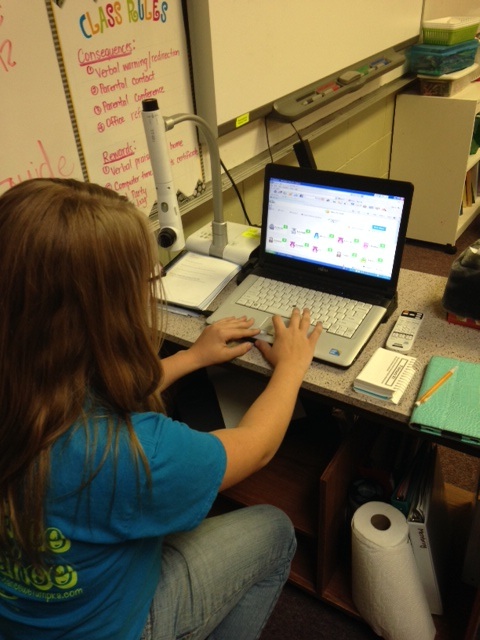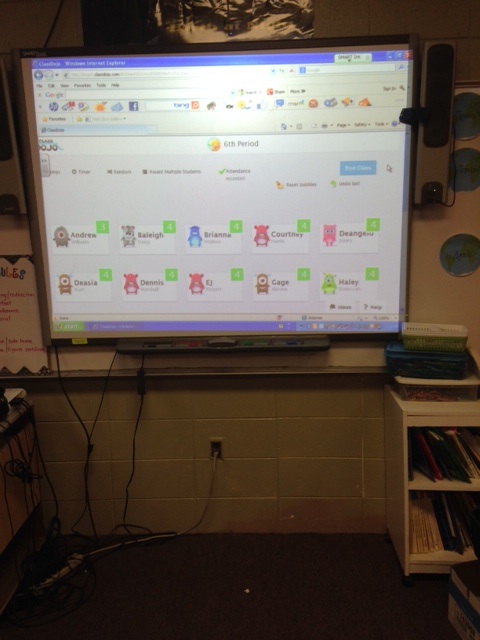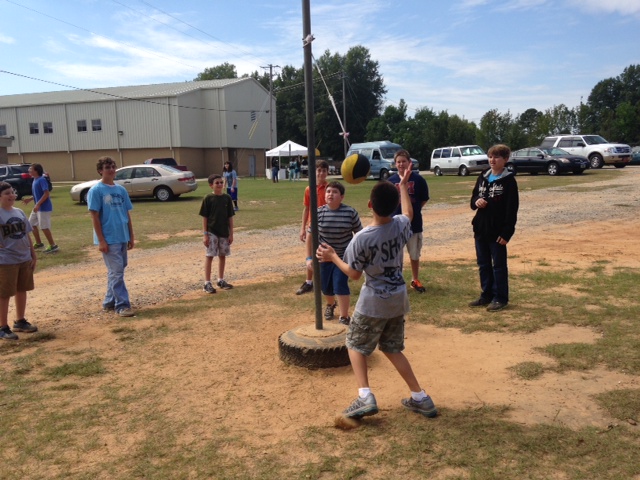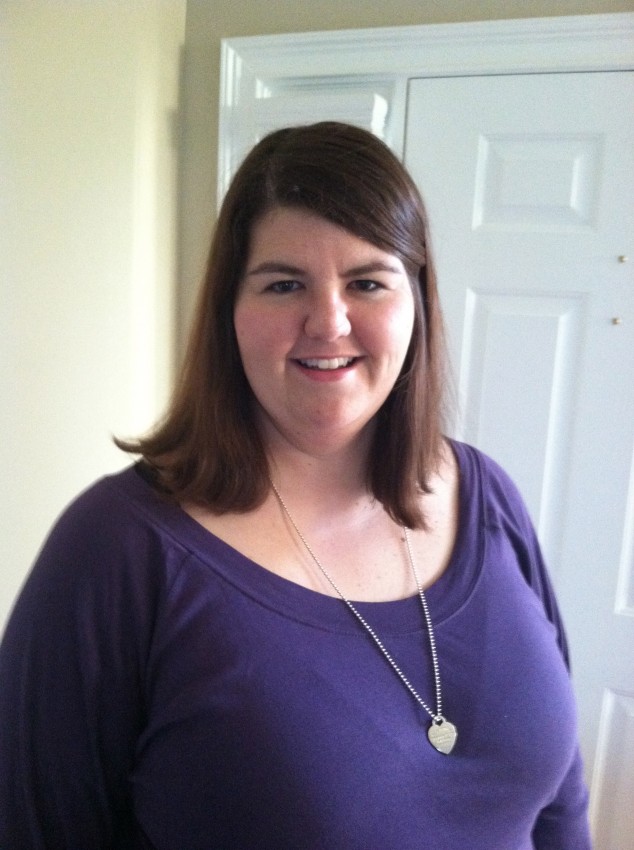
Class Dojo is a popular and somewhat controversial free tech tool for behavior management. I frequently hear it recommended by teachers at all grade levels, but am not familiar with it personally. So, I’ve invited a teacher who has used Class Dojo with her students to explain what’s worked for her. Amanda Killough, who has been teaching middle school Social Studies for eleven years, is here to share with us how Class Dojo helps reinforces positive behavior in both her individual students and the class as a whole. Thank you, Amanda!
Teaching middle school is not for the faint of heart. Often, when I tell people what grade I teach, I get the look of sympathy and a good old-fashioned “Bless your heart!” I, however, love the middle grades and all the challenges that come along with them. Managing middle school kids is sometimes like herding cats, but Class Dojo is a great tool to make it easier.
I have been using Dojo in my classroom for two years and absolutely adore it! Dojo is a free (!) online tool that allows teachers to set up classes and keep track of positive and negative behaviors in class. When I first learned about Dojo, I was not sure if it my students would find it too babyish or silly. I had nothing to worry about- middle school students LOVE Dojo!!
Class Dojo is easy to set-up and use (which is always a plus). Simply create an account using your school email and you are ready to go. Once you are into Dojo, you can choose icons for each class and begin setting up your classes. The program automatically assigns fun avatars for each student, but you can change them. Next, you can use the pre-set positive and negative behaviors or personalize them. Very quick and easy!

Now that you are set-up, the fun begins! I display Dojo on my SMART board and each week I have a Dojo assistant for each class that assists me with getting the class started. That student is chosen based on their previous week’s Dojo points (more on that later). To begin a class in Dojo, you must take attendance first and then the class is ready to earn points. I allow my assistant to take attendance in Dojo while I am getting the class started on their bell ringer.
One of the great things about Dojo is that it allows you to award points to individual students or the entire class. If all students come in and are working on their bell ringer, I have my student Dojo assistant award the entire class a point for being on task. This lets them know I have recognized they are following class procedures. When you award a point, Dojo makes a happy sound and gets the student’s attention. If several students are off task, I do not award the entire class a point. You would be surprised how this one little point has students encouraging each other to come in and get started on their assignment.
After attendance and the initial awarding of points, I take over the Dojo duties. I can keep Dojo minimized and continue on with my lesson for the day. Keeping it minimized gives me instant access if I need to award or take away a point.

In my classroom, I try to use Dojo to focus on positive behaviors instead of the negative ones. For example if a student is off task, I try to award the students around him for being on task. It is my hope that by not specifically “calling him out,” he will recognize that he is not on task. This works most of the time. Of course, if that tactic does not work, I do take away points. Dojo also makes a sad sound when points are loss and this almost immediately catches students’ attention.
Additionally, there is a Dojo app for your tablet or phone. This allows you to award points in the hallways, lunchroom, and other special events.
Another great (maybe?!) thing about Dojo is that parents can have insight into their child’s behavior during the day. All I have to do is input parent emails into Dojo, print out an access code, and they can see all their child’s information. On Fridays, Dojo can be set up to automatically send an email with all the positive and negative points received for the week. Additionally, parents can login whenever they want to check the progress. One of my colleagues has a parent who checks their account hourly and offers incentives at home for reaching a set amount of points!
To keep Dojo relevant to my students, I offer free and intangible rewards. First thing Monday morning, I always award my Dojo prizes. Students with 15 or more points can sit next to a friend in the class or at lunch. This is great because I have assigned seats. Students in this category also have the opportunity to be Dojo assistant for the week. Students with 10-14 points get computer time to play games. Students with 5-9 points get a school “gotcha ticket” that goes into a weekly drawing. The first time a student earn 5-9 points, I allow them to change their avatar to one of their choosing. These are all simple and free rewards that the students love. The little things really do motivate them to exhibit positive behavior!
I also have consequences for those who end up with negative points at the end of the week. These students have to sign the discipline log. Signing the discipline log multiple times leads to parental phones calls/conferences and eventually referrals to administration. At the end of the month, students have not signed the discipline log get to attend the pod party in which our entire pod goes outside and plays for a couple of hours.

Dojo has a lot of great uses in the classroom and it is easy for teachers and students to become addicted! However, we must remember Dojo is free and there are sometimes technical issues. Some days Dojo isn’t the fastest, doesn’t load, or the music doesn’t work, but that isn’t very often. Dojo is a fantastic tool for elementary and early middle school, but I am not sure how well it works at the high school level. I teach 7th grade and sometimes their “I don’t care” attitudes make negative Dojo points less effective.
ClassDojo is another great tool to add to your toolbox to help manage behavior. It has helped me to recognize positive behaviors instead of always focusing on the negative ones. I have also found that it encourages teamwork and self-regulation among my students.
Amanda Killough has been teaching middle school Social Studies for eleven years. She always envisioned herself as a high school teacher, but believes her true calling is with middle school students. Most of the time, she’s found that teaching middle school is more about life lessons than book lessons. She has a B.A. in History from the University of Montevallo, M.Ed. from Auburn University Montgomery in Secondary Education, and an Ed.S in Teacher Leadership from the University of West Alabama. Amanda and her husband have a one-year-old daughter and love the roller coaster called parenthood!

What’s your take on Class Dojo? Please share your opinions, questions, and experiences in the comments. And if you’d like to have your own classroom management strategy or story featured here, just fill out the guest blog form!

Angela Watson
Founder and Writer
Sign up to get new Truth for Teachers articles in your inbox
Discussion
OR

Join our
community
of educators
If you are a teacher who is interested in contributing to the Truth for Teachers website, please click here for more information.
















I use ClassDojo for high school students. I have told the parents that I will be using it as an end of lesson reflection on how the students went today. The only bad points the kids have are when they progress through the school’s strike system, or they have a second warning about something. e.g. Disruptive behaviour, redirected, disruptive again. That ties in with name on the board as a warning, tick for repeat, second tick is a strike.
I have lots of positive points too. I am using it to track homework, complete/incomplete classwork, students attitude, how they help each other or cooperate.
I know my kids’ parents would much rather hear from me/ClassDojo earlier to be able to have those conversations with their kids at the same time I’m having conversations with them. Lots of parents have their children put on short suspensions and they hadn’t heard anythign from the teacher.
As a teacher, I know parents are very confronting at times, especially when you have to deliver bad news about their child’s behaviour/attitude/work. If the parents are getting the Dojo reports, then as soon as something ‘bad’ comes up, they can message me straight away and have that conversation as soon as it happens, rather than wait, or not even be aware of it.
I use it with my year 11 class, as they are the hardest with the most blaise attitude. For me it’s a tracking tool. Kids can find out where they are with the Dojo points logging in to their account (or their parents tell them).
It takes a village to raise a child and I find that this helps a lot!
Thanks for sharing your experience, Jackie!
I’m a parent and it’s an awful system. Teachers like it because it makes their lives easier whether it’s better for the student or not (which it isn’t). I find that the really good teachers that make an impact on children don’t focus as much on behavior. Why? Because the kids love them and behave (as my children do with us–the parents–and we’ve never needed timeouts, reward/punishment, etc.). It’s the bad teachers that are constantly using these behavior tricks. If teachers would spend more time being better teachers they wouldn’t need all these lame tools.
One day in the future people will look back on Class Dojo and the “marble jar” and think we were in the dark ages the same way we look back at teachers who slapped hands with rulers. The only tool it gives teachers is allowing lazy teachers who haven’t learned anything about empathy to manage behavior. Read this and you may change your mind: http://www.teachingace.com/thinking-about-classroom-dojo-why-not-just-tase-your-kids-instead/
I’m sorry that the way Class Dojo was used in your child’s classroom was not beneficial. I remember reading the article you linked to (in fact, it’s linked to in the first sentence of the post) and it made some excellent points. However, it’s going to be hard for anyone to really hear your message if you refer to teachers who use Class Dojo as “bad” and “lazy.” Keep in mind also that not all teachers use the negative points in Class Dojo.
I have used many different behavior systems in the past. There is no easy way of doing this because each child and family is different. I just had 24 students in my 1st grade classroom. I am well aware that my behavior system at the time did not work for everyone but it is a base for many of the students to learn appropriate behaviors. Some families cared (maybe even too much), while others could have cared less. The idea is that the teacher is trying to communicate with you the behaviors noticed so you may deal with them and support the teacher who wants your child to get the most out of school that they can. I am looking forward to using this program next year because of the direct feedback with the parents.
For those of you on here posting of your child’s behavior with negative points I want you to think of this…. Would you rather know where the difficulties are or be oblivious? Yes negative points aren’t comforting to anyone but they do raise awareness. One thing to discuss with your teacher is where all these negative points come from during the day…. subject, time of day, etc. Maybe you’ll find that these negative points come from the fact that your child may have difficulty with a subject matter, type of assignment, or the opposite of both. The main thing is that the teacher, student, and parents need to address why is this happening, what can each person do to lessen the frequency of these behaviors, and will we all work together to do this? Just remember…..the last part is essential.
Thanks for sharing your take, Emily.
My school is using Class Dojo as the main tool to drive our PBIS program. I’m curious, how are teachers keeping up with points awarded during the day? I understand it can be done on the computer or on a tablet, but not all teachers are at their computers most of the day, particularly the teachers in the early grades. Is there a chart to list students’ names and maybe points awarded and why during the day. These of course can be updated at various times on the computer, but with a chart you’d have a paper copy to keep and wouldn’t forget about points awarded when you weren’t right in front of your computer.
As my mother always said, nothing is ever free. Class Dojo uses it as a way to gather your information and sell you stuff. They’ve done no psychological testing and basically are app developers. This isn’t a nonprofit like Khan Academy devoted to helping students. It’s all about money and pleasing teachers so they’ll use it and give them more personal information. (Do the math 20+ students a year and multiply it times 2 to include parents and you’ve got 60 new people in your database to market to or sell to other companies – very profitable I’m sure. Read everything in their policy statement.) They only want to please teachers and not parents. It’s funny (not ha-ha funny) that many teachers go on and on about how great it works for them (never how great it is for the kids emotional development) and I don’t hear child or school psychologists saying how good it is for kids. It’s unconscionable that teachers don’t talk to child development professionals before they try this out. As a teacher and school you should be worried for several reasons (1) you are probably violating a parent’s privacy by giving their email to CD, (2) especially for kids under 13 they are protected by COPPA laws and you shouldn’t give their information to a company, and (3) and when you post behavioral scores for all to see you are probably violating privacy laws. Especially for elementary students who get a report card that grades behavior. I’m surprised no one has been sued yet. Or maybe they have. With all the data/cyber security breaches of even giant companies like Target, Home Depot, and Sony, schools and teachers should think twice before hiving over personal information to an internet company.
Dear Maggie, you are SO on-target regarding this application. It is intimidating and destroying our child’s self-confidence. He comes home in tears most of the time — and he’s 10 yrs old! The tool serves only to communicate how “bad” he is (his words, not mine) and everything he is doing “wrong”. No positive points even though he has helped fellow students, teachers, and even raised money on his own for his school. We are only 3 weeks into the school year and the teacher’s use of this application has already destroyed our child’s joy and enthusiasm towards his school and school work. We will definitely look more into this, especially regarding the use of our child’s information. We as parents need to understand our legal rights.